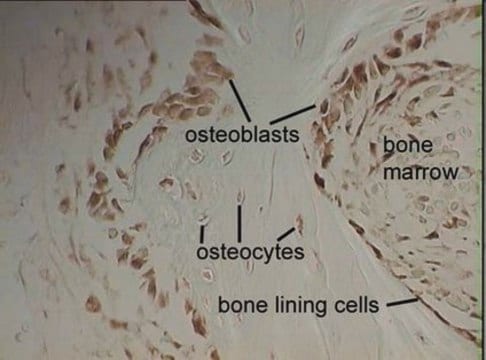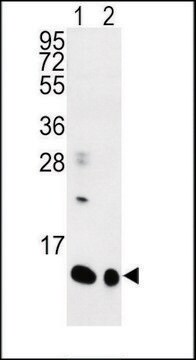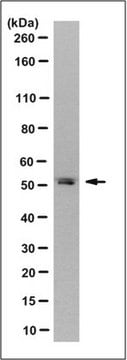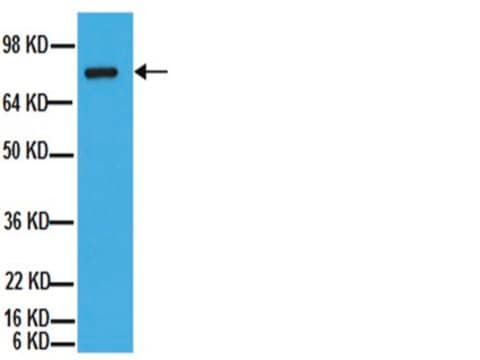MAB3291
Anti-H-Ras Antibody, clone 7D7.2
clone 7D7.2, Chemicon®, from mouse
Sinônimo(s):
Anti-C-BAS/HAS, Anti-C-H-RAS, Anti-C-HA-RAS1, Anti-CTLO, Anti-H-RASIDX, Anti-HAMSV, Anti-HRAS1, Anti-RASH1, Anti-p21ras
About This Item
Produtos recomendados
fonte biológica
mouse
Nível de qualidade
forma do anticorpo
purified antibody
tipo de produto de anticorpo
primary antibodies
clone
7D7.2, monoclonal
reatividade de espécies
rat, mouse, human
fabricante/nome comercial
Chemicon®
técnica(s)
ELISA: suitable
western blot: suitable
Isotipo
IgG2b
nº de adesão NCBI
nº de adesão UniProt
Condições de expedição
wet ice
modificação pós-traducional do alvo
unmodified
Informações sobre genes
human ... HRAS(3265)
Especificidade
Imunogênio
Aplicação
Signaling
MAP Kinases
ELISA
Optimal working dilutions must be determined by end user.
forma física
Armazenamento e estabilidade
WARNING: The monoclonal reagent solution contains 0.1% sodium azide as a preservative. Due to potential hazards arising from the build up of this material in pipes, spent reagent should be disposed of with liberal volumes of water.
Outras notas
Informações legais
Exoneração de responsabilidade
Não está encontrando o produto certo?
Experimente o nosso Ferramenta de seleção de produtos.
Código de classe de armazenamento
10 - Combustible liquids
Classe de risco de água (WGK)
WGK 2
Ponto de fulgor (°F)
Not applicable
Ponto de fulgor (°C)
Not applicable
Certificados de análise (COA)
Busque Certificados de análise (COA) digitando o Número do Lote do produto. Os números de lote e remessa podem ser encontrados no rótulo de um produto após a palavra “Lot” ou “Batch”.
Já possui este produto?
Encontre a documentação dos produtos que você adquiriu recentemente na biblioteca de documentos.
Nossa equipe de cientistas tem experiência em todas as áreas de pesquisa, incluindo Life Sciences, ciência de materiais, síntese química, cromatografia, química analítica e muitas outras.
Entre em contato com a assistência técnica







